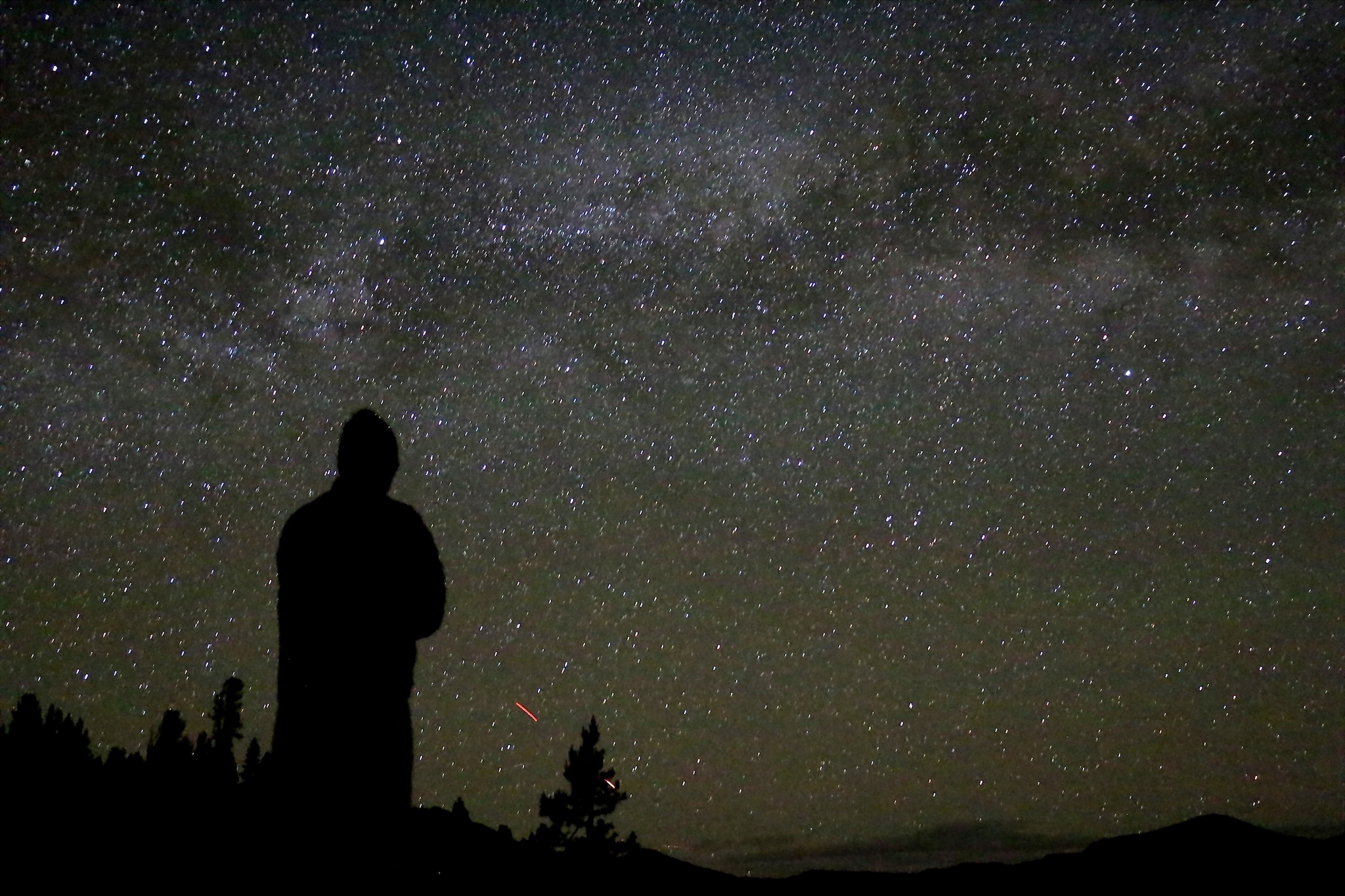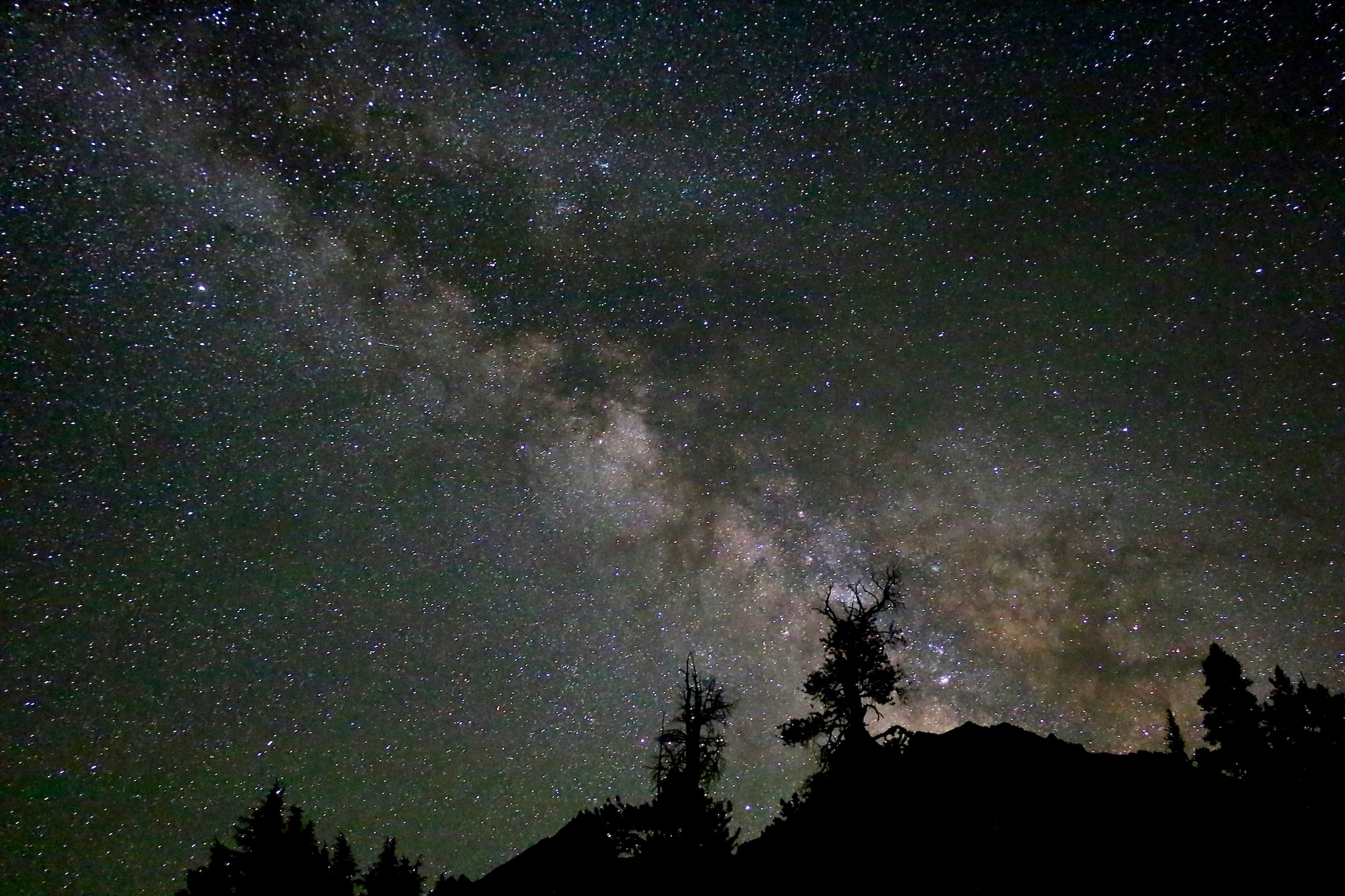Milky Way Astro Photography
Seeing the Milky Way, especially the core of the galaxy, cutting across sky is a spiritual experience. It sucks that light pollution from civiliation has made it so that we can't see the night sky in its full glory usually. Most of the shots below were taken on trips to somewhere remote with super dark skies. Usually this is on top of a mountain somewhere or in the middle of the desert.
Astrophotography is hard. The key is to take a number of test shots to get the exposure right. Rules of thumb I've found useful:
- Don't crank your ISO up all the way. Stay at ISO 800-ish to reduce noise.
- Open up your f-stop all the way. Everything is at infinity. There is no depth of field necessary.
- Then get the shutter speed right. Usually 10-ish seconds is good. More you start getting star trails because of the Earth's rotation.
- Use the 2-second timer so pressing the button doesn't blur your photo.
- Use manual focus and set the focus at infinity. You may need to play with the focus with some test shots. Make sure the stars look crisp.
- You should need minimal post processing. Just some brightness and contrast tuning to make the stars pop.
As with all photos, it's nice to have something in the foreground to give the composition some scale. If possible, it's often fun to use a headlamp to expose something in the foreground as a contrast.
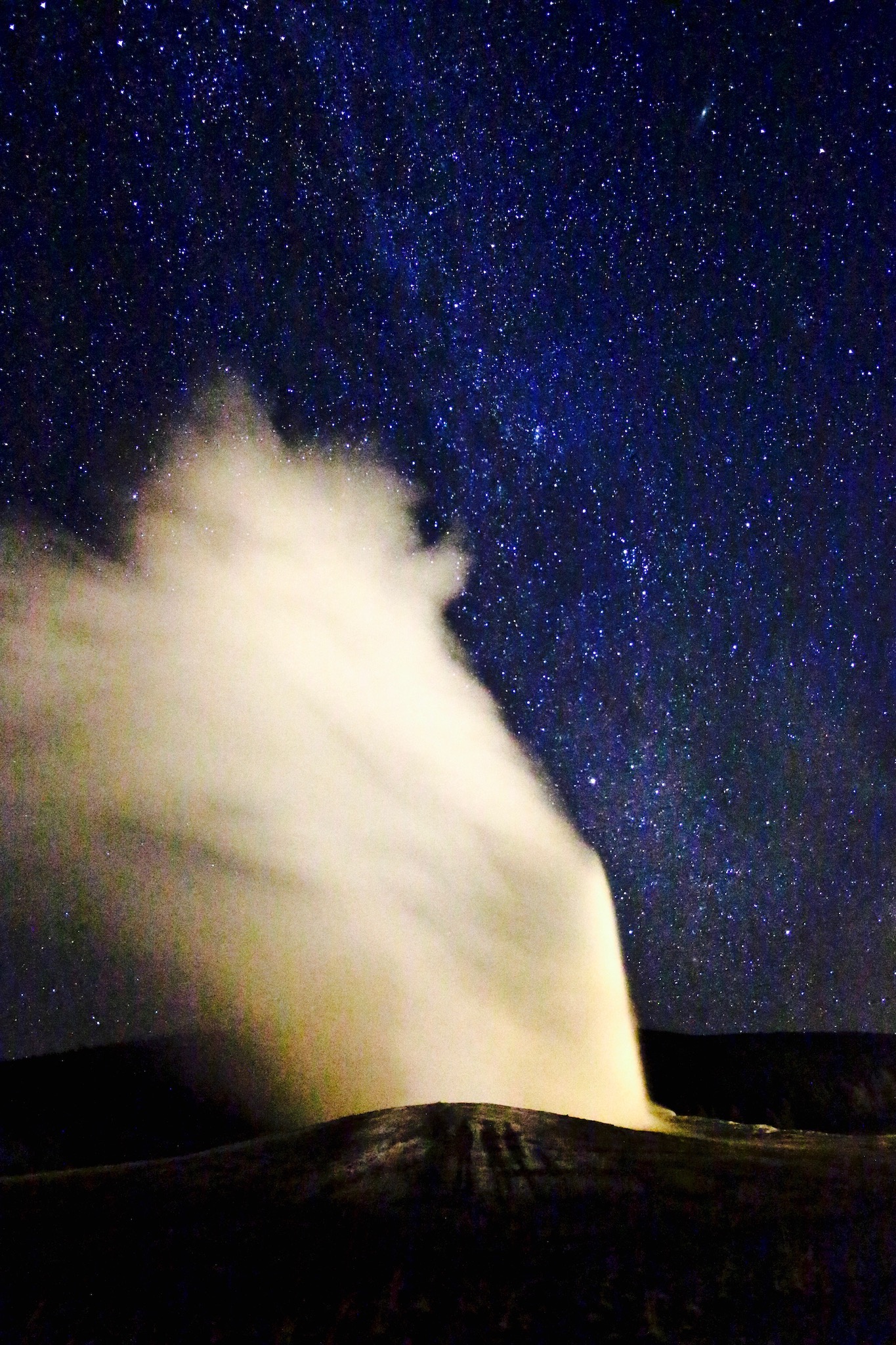
|
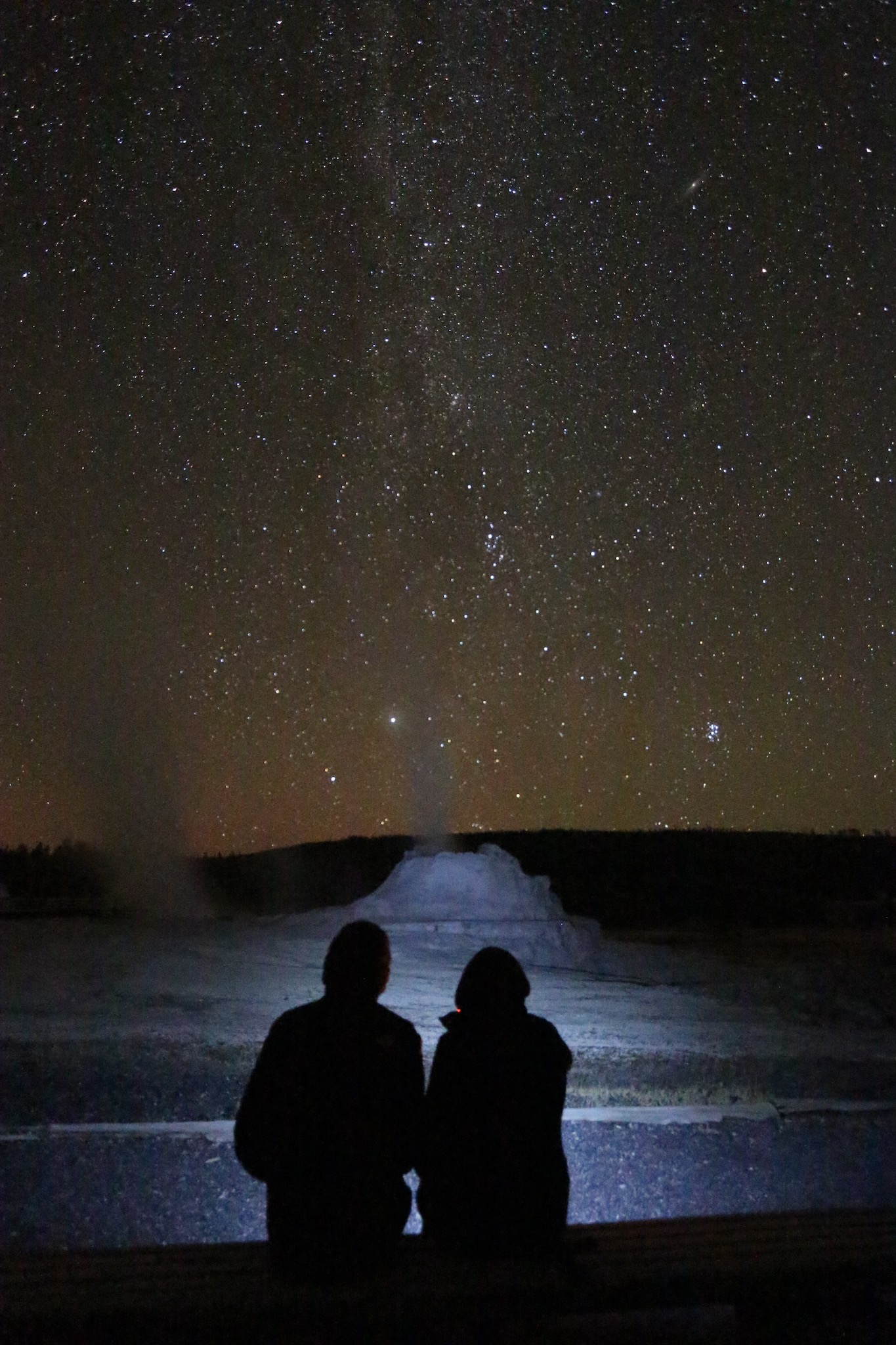
|
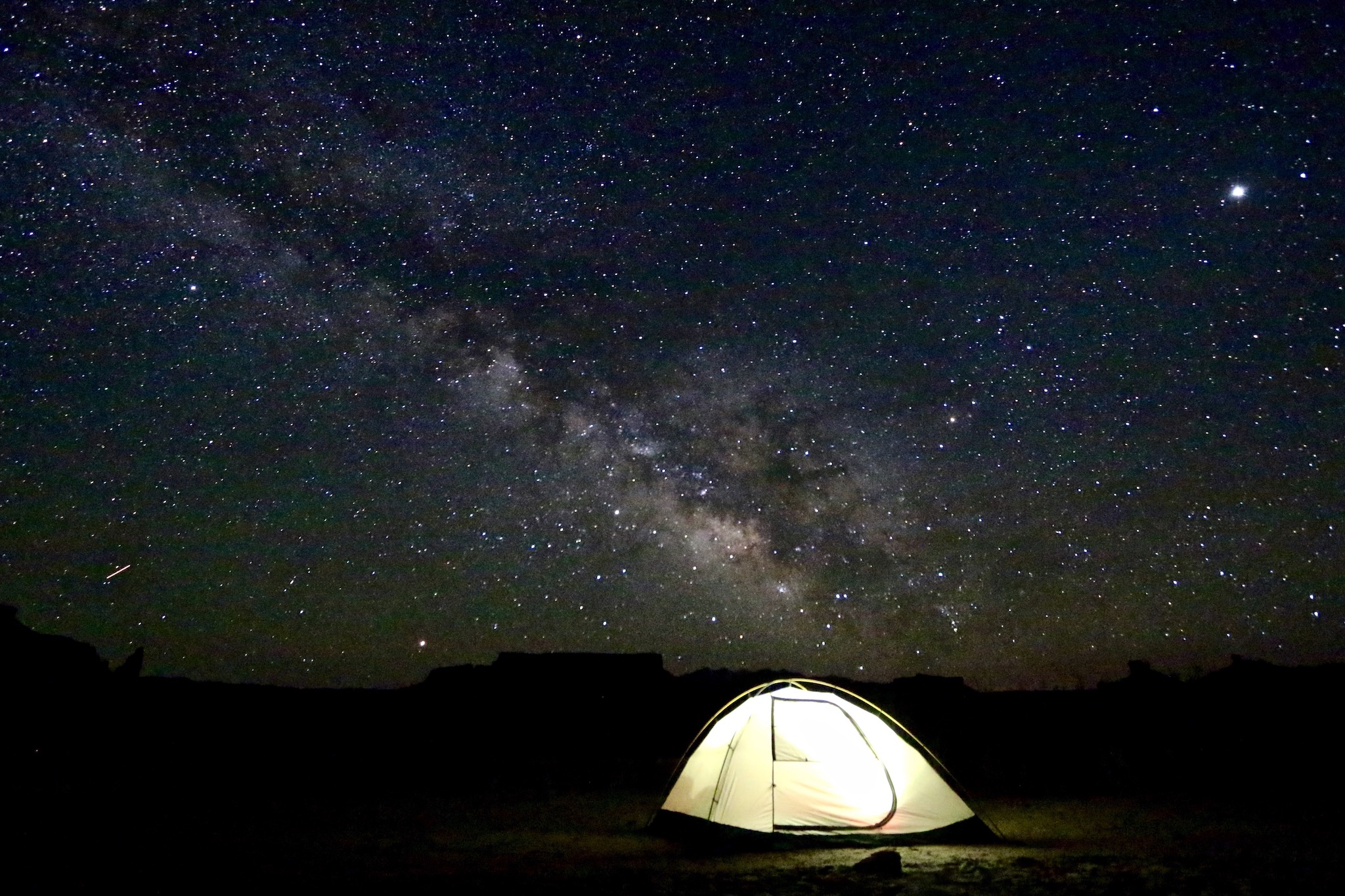
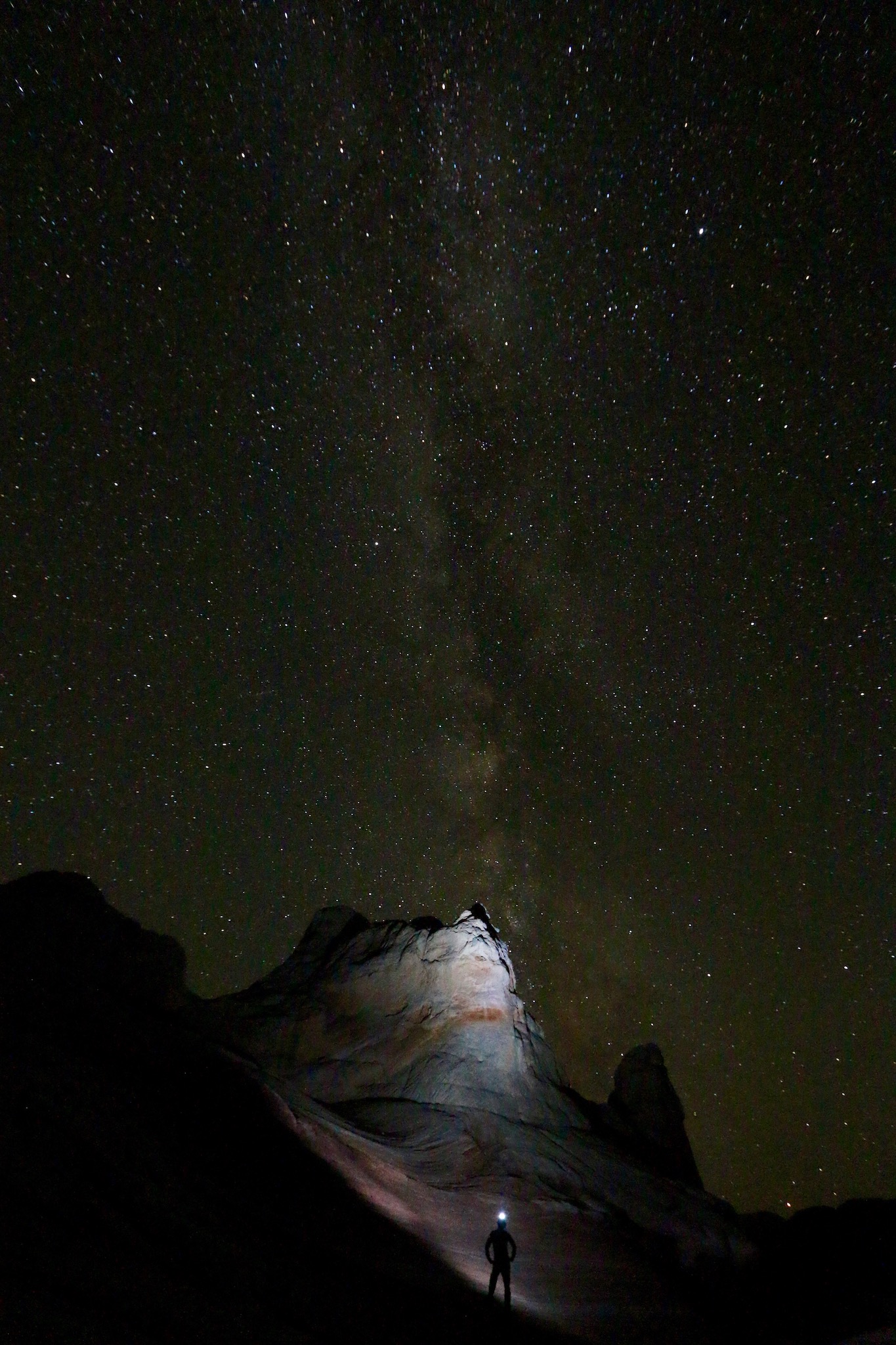
|
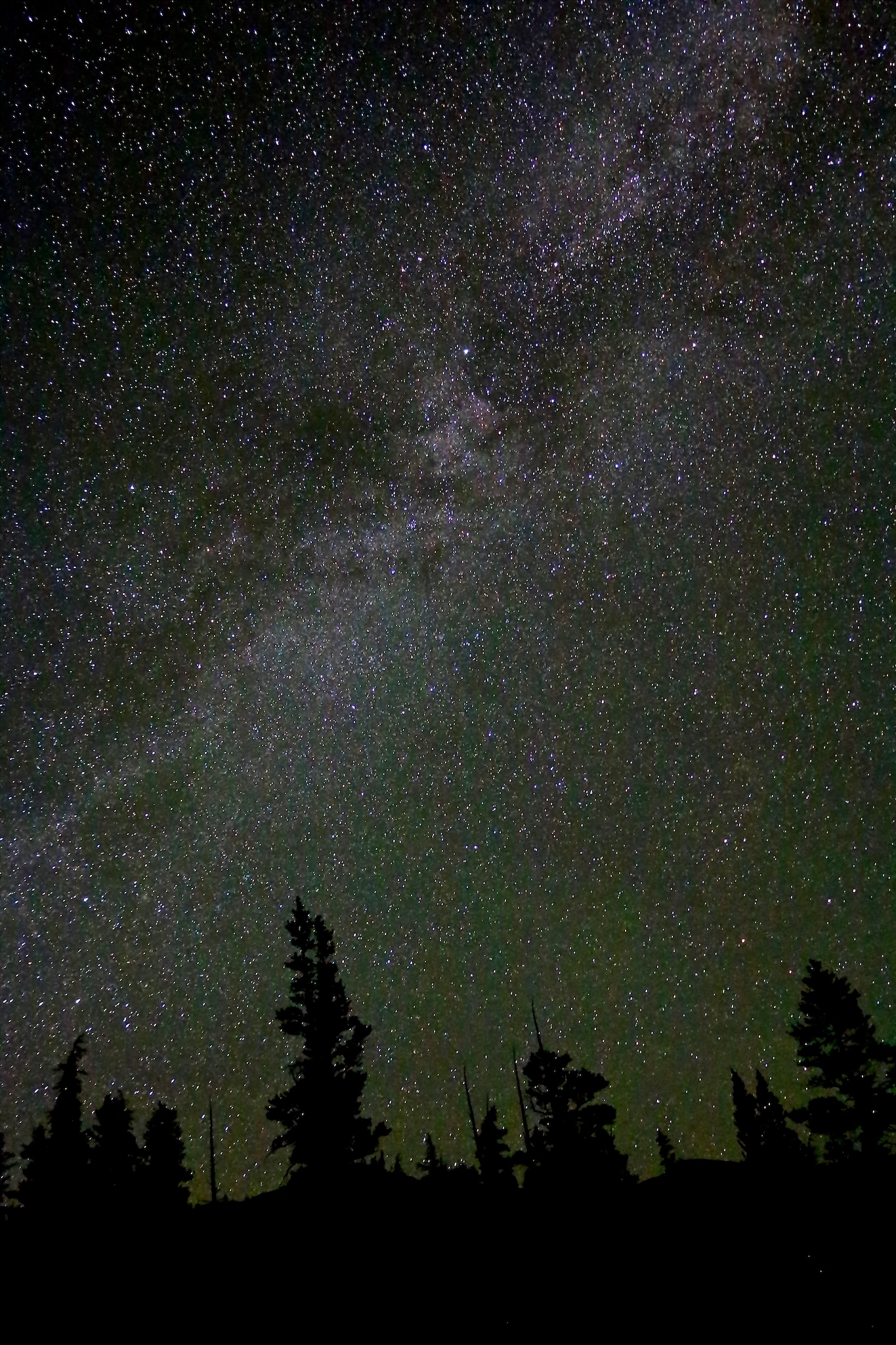
|
